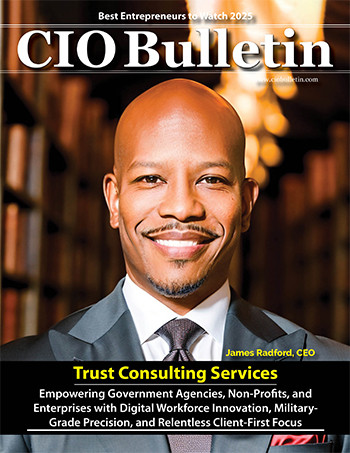Home Technology Security 5 Tech Advancements Revolution...
Security

CIO Bulletin
19 Febuary, 2025
Security has changed. The old playbook doesn’t work anymore. Businesses relying on outdated cameras, keycards, and alarm systems are easy targets. Criminals have gotten a lot more sophisticated.
Threats move faster in the modern era, and the margin for error is gone. Thankfully, some truly innovative breakthroughs are setting things right.
Security cameras used to be reactive. They recorded everything, but unless someone sat there reviewing footage 24/7, they were useless in real-time. AI has changed that.
AI-driven surveillance systems analyze live feeds instantly, flagging threats before they escalate. Unusual movement? Suspicious behavior? The system catches it and alerts security before an incident happens. No more waiting for someone to notice a problem hours - or days - too late.
Cameras aren’t the only advantage. AI-driven access control is eliminating weak points, replacing keycards and PIN codes with real-time facial recognition and biometric authentication. Combined with superior protection from Vaultek safes, businesses get controlled access that locks out threats without relying on outdated security methods.
On-premise security systems are relics. They’re slow to update, impossible to scale, and leave businesses exposed the moment someone isn’t physically there to monitor them.
Cloud-based security fixes that. Everything - cameras, access logs, alerts - is accessible in real-time from anywhere. Security teams don’t need to be in the office to react. They don’t need outdated servers holding footage that might be wiped or stolen. Everything is backed up, encrypted, and accessible when it matters.
With cloud integration, security systems evolve. No waiting for IT to roll out updates. No vulnerabilities sitting open because hardware is too outdated to handle new threats.
Traditional security setups don’t communicate. Cameras, alarms, and sensors all operate separately, creating gaps that threats can slip through. The good news? IoT-connected security systems fix that by integrating every component into a single, responsive network. Here’s how IoT security devices work together to eliminate vulnerabilities:
|
IoT Security Component |
Function |
How It Improves Security |
|
Smart Cameras |
AI-enhanced video monitoring |
Detects and tracks threats in real time |
|
Motion Sensors |
Detects unauthorized movement |
Triggers cameras and alerts security teams instantly |
|
Access Control Systems |
Biometric and mobile credential authentication |
Prevents unauthorized entry with real-time monitoring |
|
Environmental Sensors |
Tracks air quality, smoke, gas leaks, and temperature changes |
Identifies hazards before they become emergencies |
|
Automated Alerts |
Sends notifications to security teams and integrated systems |
Reduces response time and improves coordination |
IoT security creates an environment where every security component talks to each other, responds in real-time and ensures no threat - whether a break-in or a fire - goes undetected.
Nowadays, we all know how easy it is for passwords to get stolen or keycards to become lost. Biometric authentication doesn’t have such problems. Fingerprint scans, facial recognition, and retina scanning lock down access in a way that can’t be bypassed.
You don’t have to worry about forgetting your badge or vulnerable credentials exposed to theft. Only the right people get in. For businesses protecting sensitive data, high-value inventory, or restricted areas, biometrics aren’t optional. They’re the difference between a secured space and a massive security breach.
Wired security had its moment. That moment is over. Running cables through an entire facility is expensive, inconvenient, and - worse - vulnerable. One severed connection and an entire system can fail. Wireless security eliminates that risk.
Modern wireless surveillance cameras stream high-definition video over encrypted networks, making them harder to disrupt. Wireless access control lets security teams lock or unlock doors remotely. There’s no single point of failure. The system stays online, no matter what.
Physical security is evolving. Businesses that fail to adapt are leaving themselves exposed. Everything from AI-driven surveillance to IoT-connected systems is now the baseline for real security in a world where threats move fast. The choice is simple: upgrade, and you’ll have the edge over today’s litany of threats.







